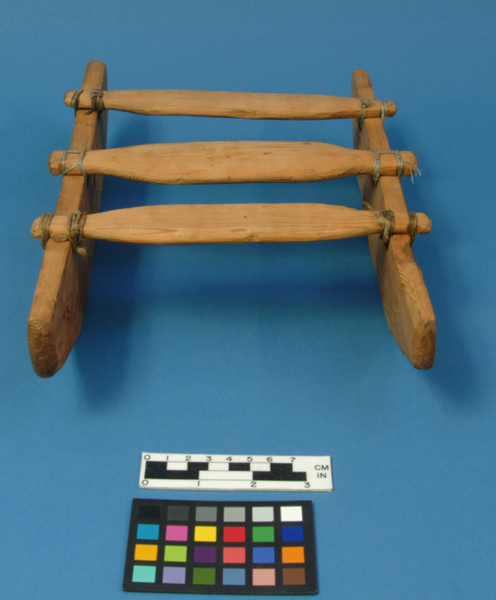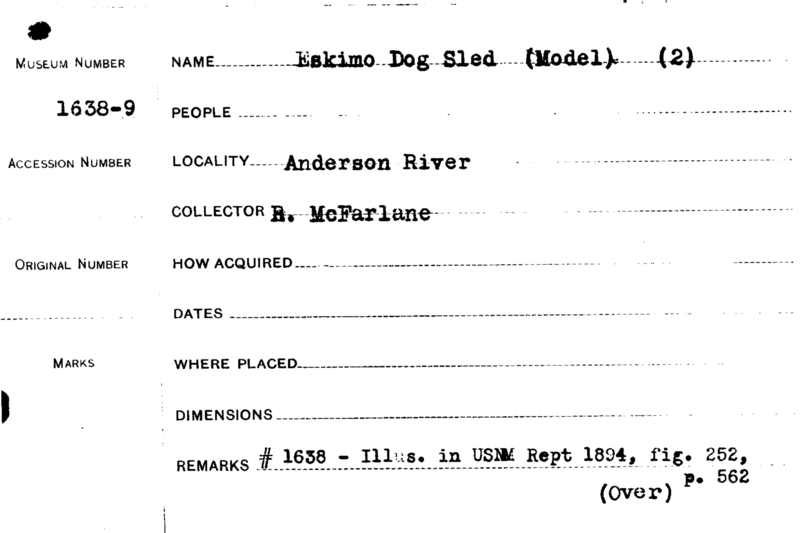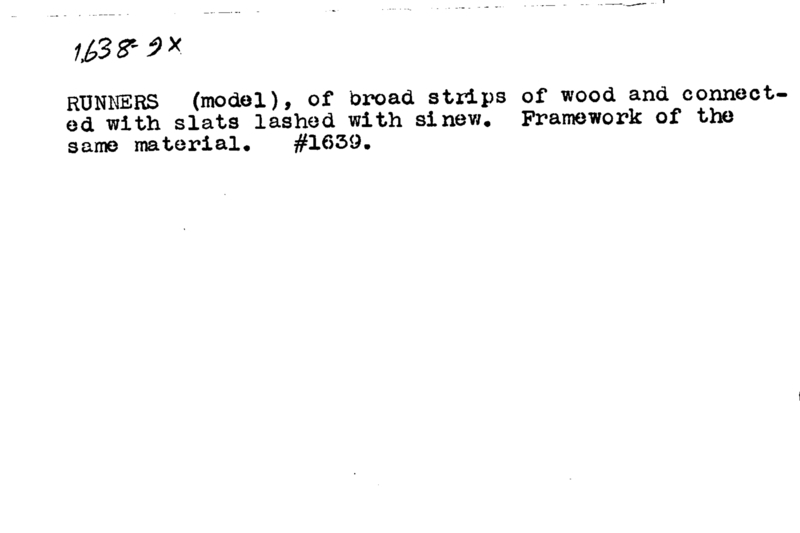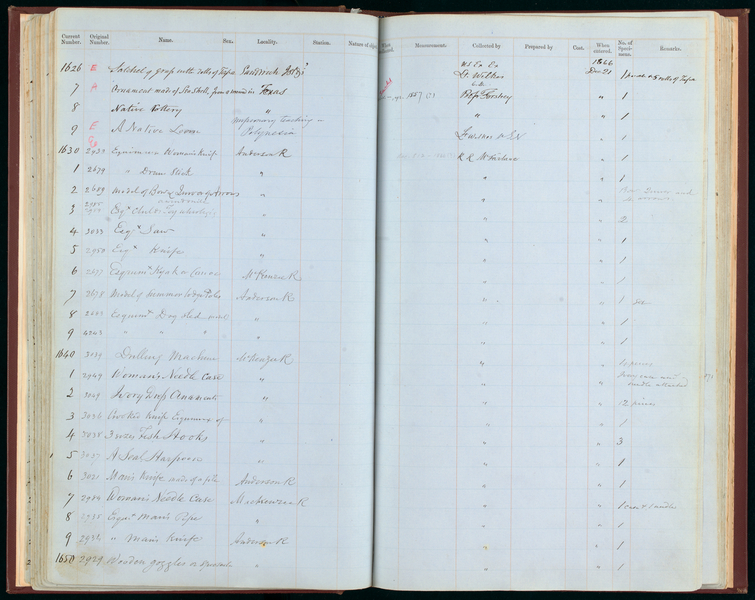Dog Sled Model Item Number: E1638-0 from the National Museum of Natural History






Notes
FROM CARD: "ILLUS. IN USNM REPT 1894, FIG. 252, P. 562." Identified in publication: "... model of a sled from Anderson River consisting of high solid runners and crossbars. The runners have a long bevel in front and a short one in the rear, and are sawed off at the ends. There are three crossbars, broad in the middle and chamfered at the ends for the lashing. Near the upper border of the runners holes are gouged through the wood as long as the end of the crosspiece is wide. A double lashing passes over the end and through these holes so as to give a double bearing or brace. This is a very common method of attachment among the ... [Inuit]. In the model the lashing is done with rawhide and sinew twine. This example reproduces with considerable faithfulness the construction of the aboriginal types. The shoeing on the bottom of the runners is fastened on with pegs of wood. Length, 12 inches."Source of the information below: Inuvialuit Pitqusiit Inuuniarutait: Inuvialuit Living History, The MacFarlane Collection website, by the Inuvialuit Cultural Resource Centre (ICRC), Inuvik, N.W.T., Canada (website credits here http://www.inuvialuitlivinghistory.ca/posts/12 ), entry on this artifact http://www.inuvialuitlivinghistory.ca/items/45 , retrieved 12-17-2019: Model of a qamutik sled made from wood. The bottom edges of the runners are cut aslant at the front and back. Three crosspieces are attached to the tops of the runners by sinew and hide lashings that loop over each end where they project beyond the runners, pass through a corresponding slot in the runner, and then loop over the crosspiece again just inside the runners. Grooves cut through the runners near each end would have been used for tying down cargo carried on the sled. More information here: http://www.inuvialuitlivinghistory.ca/item_types/72: The MacFarlane Collection contains small models of several types of sleds used by Inuvialuit for travelling on snow-covered ground. These models may have been commissioned since full-size sleds would have been difficult to ship the the Smithsonian Institution.
Item History
- Made in Northwest Territories, Canada
- Collected in Northwest Territories, Canada
- Received from Roderick R. MacFarlane on December 21, 1866
What
- Name
- Dog Sled Model
- Identification Number
- E1638-0
- Type of Item
- sled model
Who
- Culture
- Eskimo, Inuit and Inuvialuk
- Received from
- Roderick R. MacFarlane
Where
- Holding Institution
- National Museum of Natural History
- Made in
- Northwest Territories, Canada
- Collected in
- Northwest Territories, Canada
When
- Acquisition Date
- on December 21, 1866
Other
- Accession Number
- 66A00090